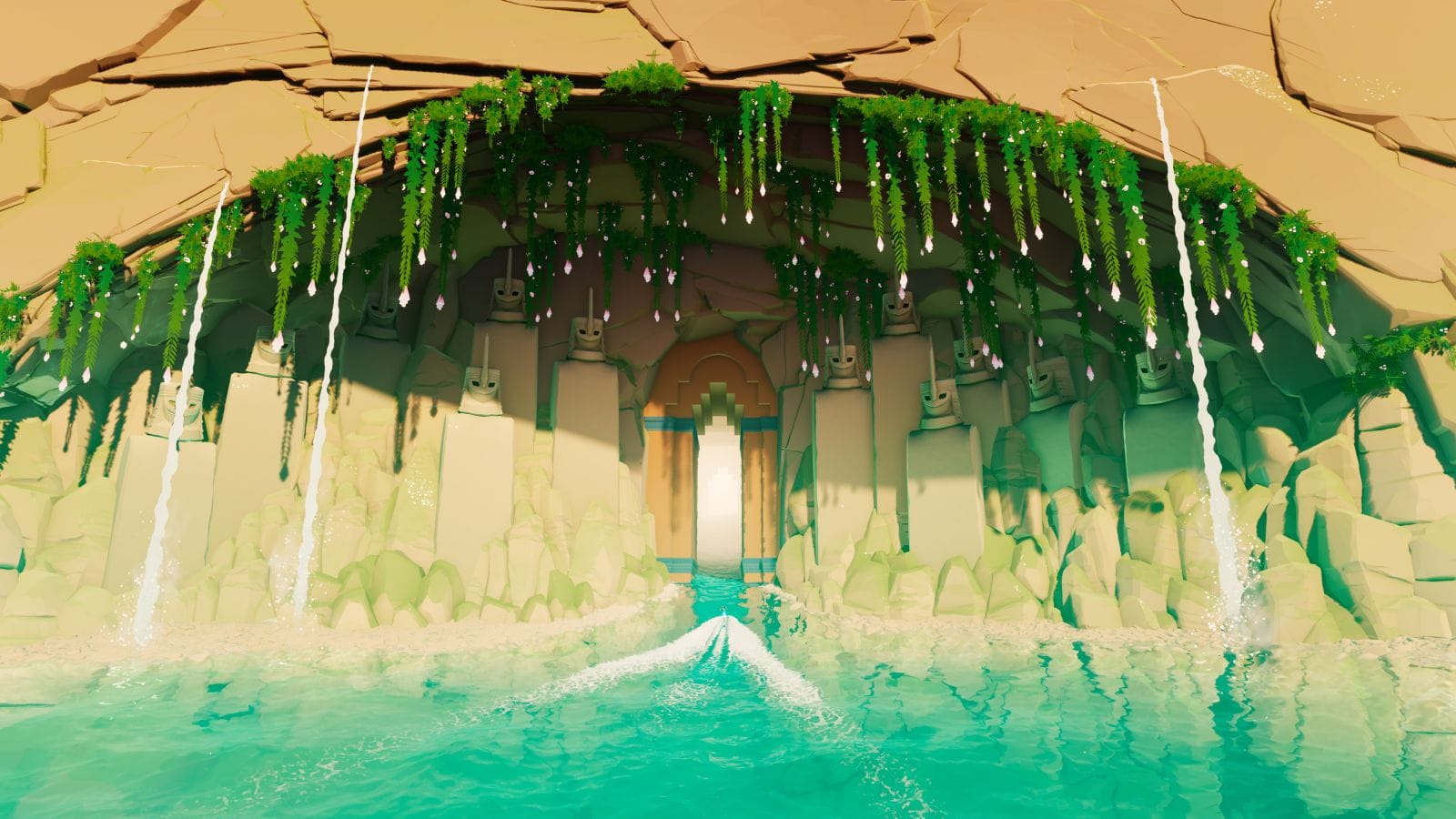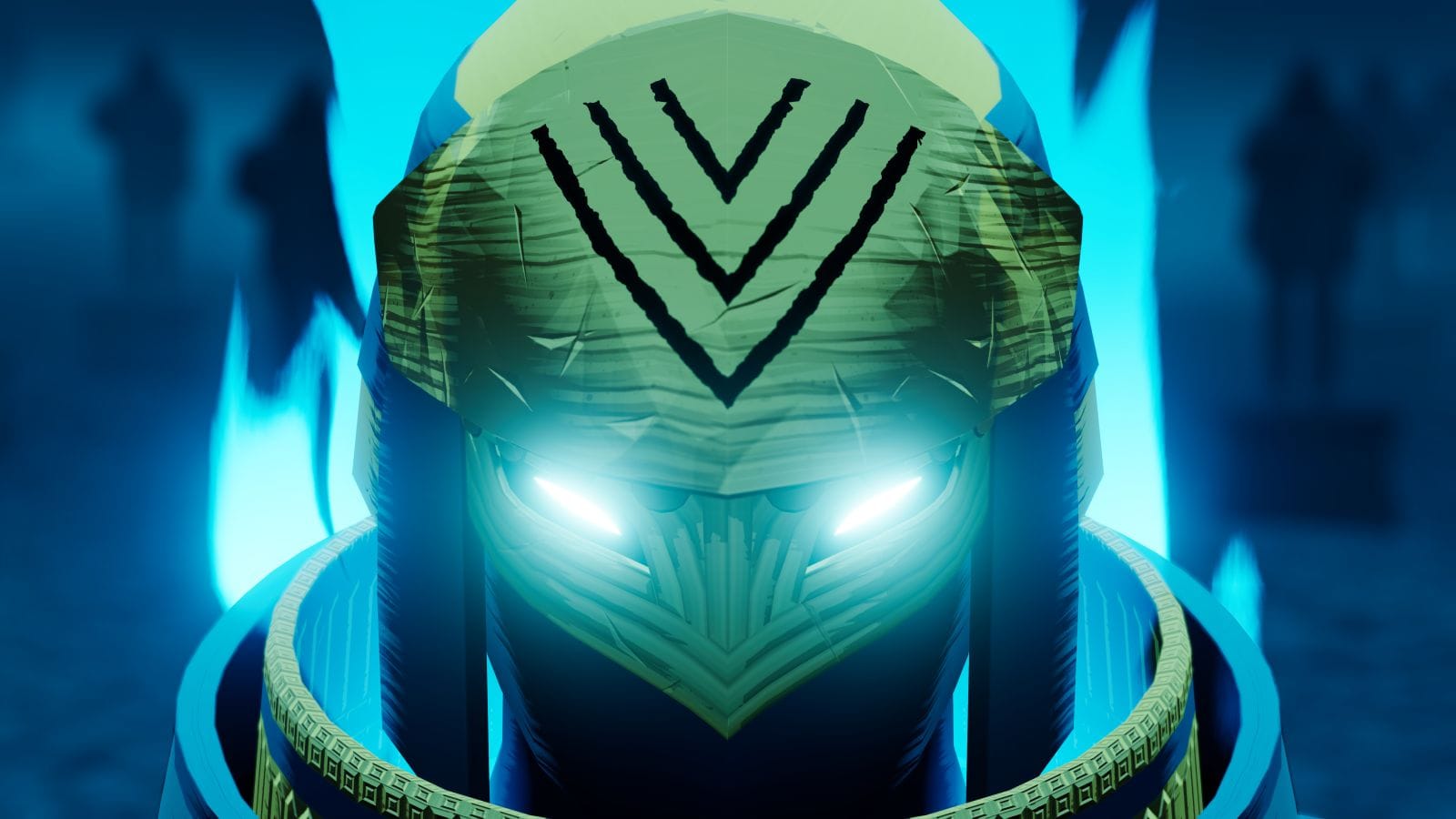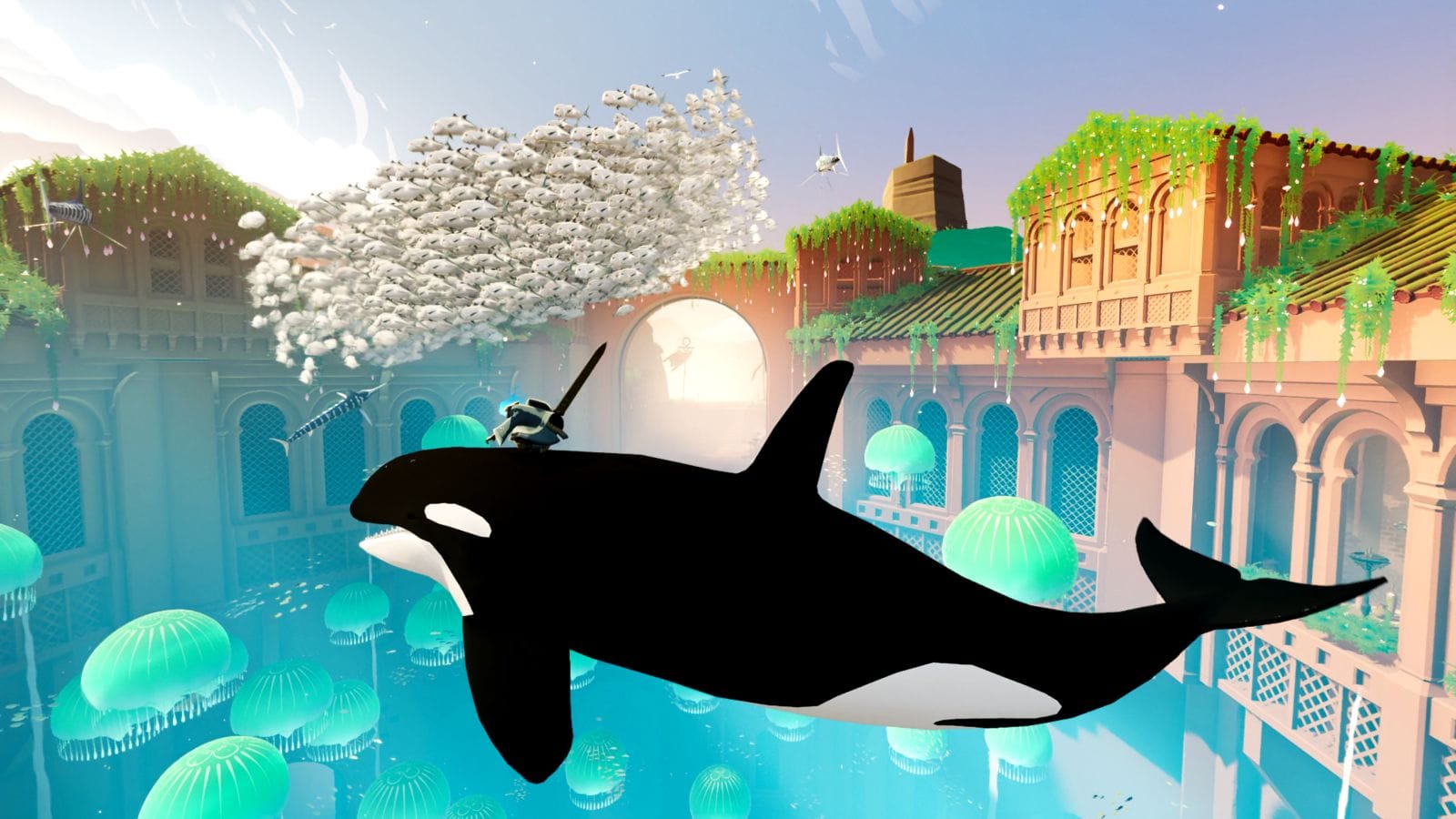
Sometimes you need a moment to breathe. That’s how I certainly felt on the last day of Summer Game Fest, looking for a moment to stop and exhale during a flurry of last second appointments. I’d tried to get a look at Sword of the Sea, but hadn’t found an opening, until later in the day something manifested. After thirty minutes of playing Sword of the Sea, I felt refreshed, cleansed by the majesty that is this game.
Right away, it’s apparent this is a Giant Squid game. Their stylistic approach is unique to them, from their start in ABZU and more recent The Pathless. The bright colors mesh well with abstract environments, with a simplistic look that is absolutely gorgeous. It’s pure art, and Sword of the Sea is injected with that by tenfold.
As soon as the demo opened, I saw a stone soldier (known as The Wraith), awakened by a droplet of water. Brandishing a sword, it was surprising to watch him instead drop it to the ground and rocket off on it. This hoverboard aesthetic reminds me of zipping around on the board you have in Hyper Light Breaker, although the controls in Sword of the Sea are incredibly polished and tight. It might be the cleanest surfing experience in gaming; it’s that good.
I wasn’t expecting what came next. After completing a short tutorial, the game opened up Breath of the Wild style with a cinematic pull back of the camera into a title shot. We’ve already talked about how beautiful the expanse is, and the rolling sands are to die for.


Speaking of rolling sands, they’re literally rippling waves in Sword of the Sea, something that initially caught me off guard. It’s an incredible aesthetic, and a biome I could surf around on for hours easily. As you progress, there are changes to it, with the sand transforming to water. Even though the traversal itself doesn’t really change, there’s something about it that is so pleasing, especially when you make a huge jump onto it and sink below the waves for just a moment before popping back up.
Exploration is the name of the game in Sword of the Sea. You aren’t given objectives, although I did find a time trial out in the wild to complete, and there’s no combat. You have the autonomy to simply surf around until you come across what you need to do next to open the path to the next area, hitting a few random tricks along the way. Most of that comes down to activating a few lamps by surfing through the bushel of them on the ground, getting a look at what the action triggered in the environment, then using that to continue forward. It’s pretty great to go up to a big door, it not open, and just organically figure out how to unlock it as you complete the level.


The star of the show, however, is the PlayStation 5 DualSense controller. I’m not familiar with how their other games function with it, but here, it’s a revelation. All of the haptic feedback is excellent, allowing you to feel exactly whatever you’re surfing on. The sand feels gritty, the water is fluid, and at the end of the level when I was grinding down a chain to the big door mentioned earlier, I could feel each chain link beneath the board. Talking with a developer after my session, he gave the credit to their audio engineer, who I must say did a stupendous job connecting the sound with this functionality.
If you’re like me and just need a break, Sword of the Sea might be the perfect game for you. The soft beauty it exudes, along with a slower pace that helps you slow down in body and mind is delightful. We need more art like Sword of the Sea in the industry; my thanks to Giant Squid for reminding me of that. Sword of the Sea arrives on August 19th for PC and PlayStation 5, also launching day one on PlayStation Plus.
